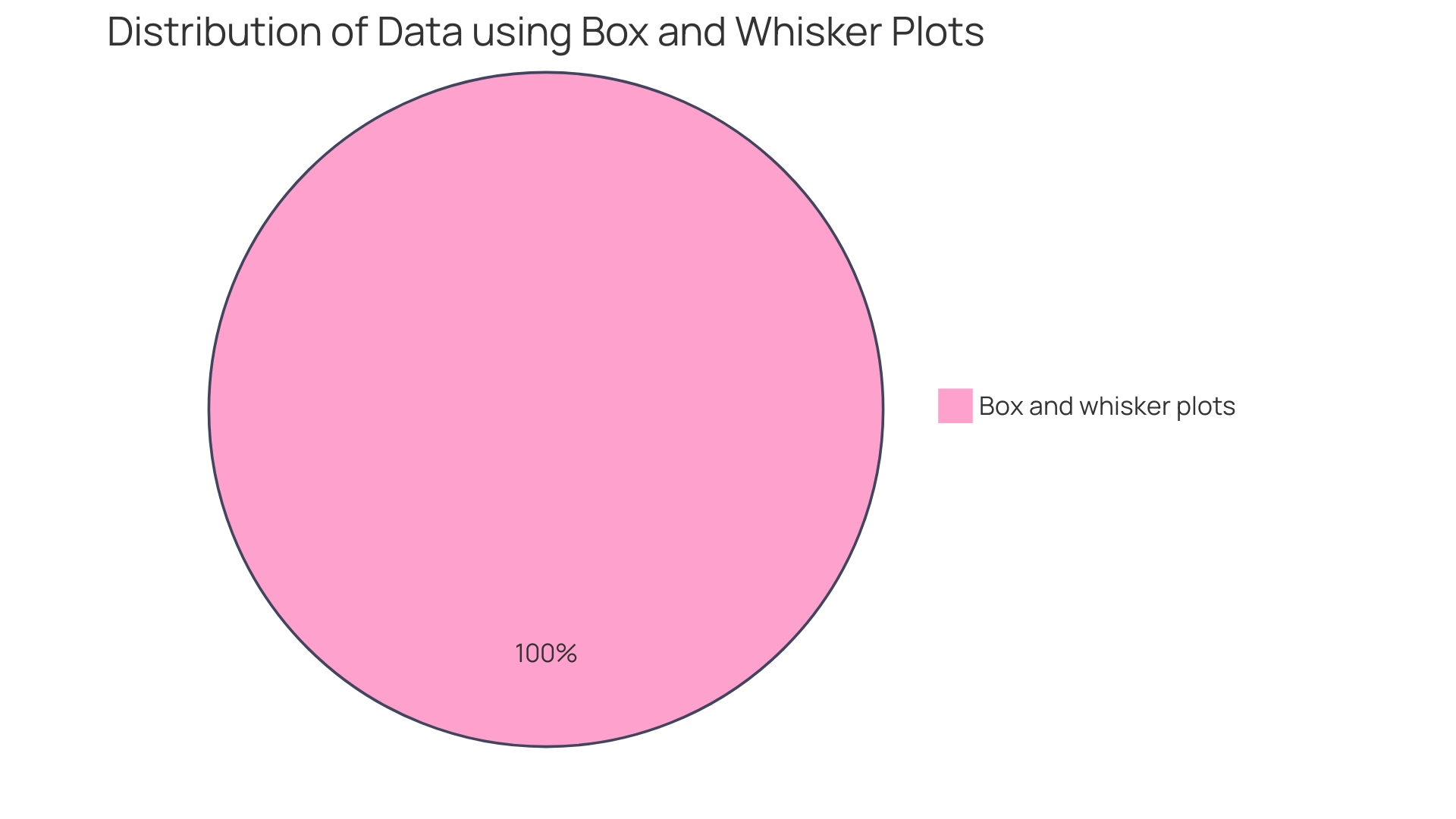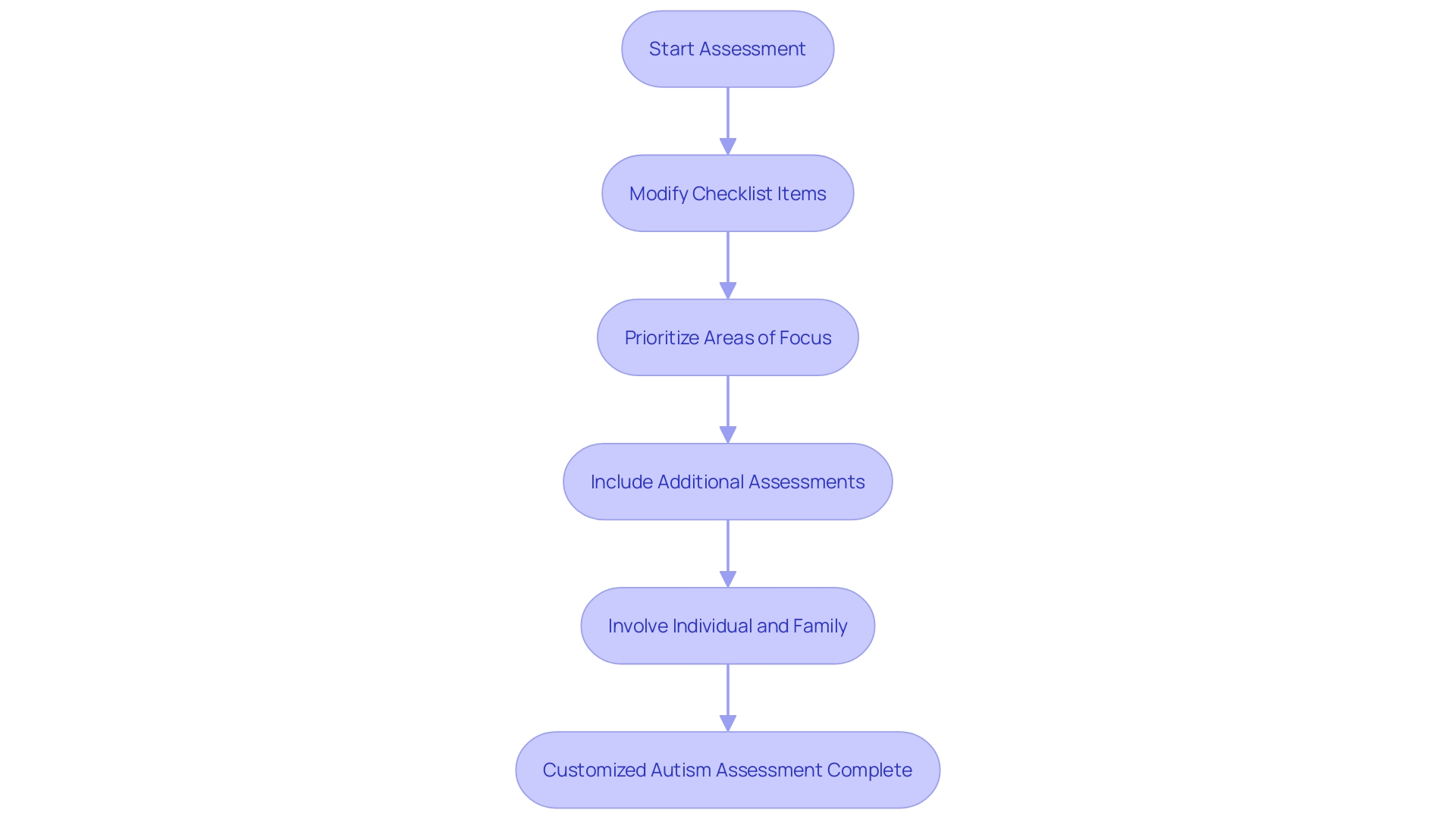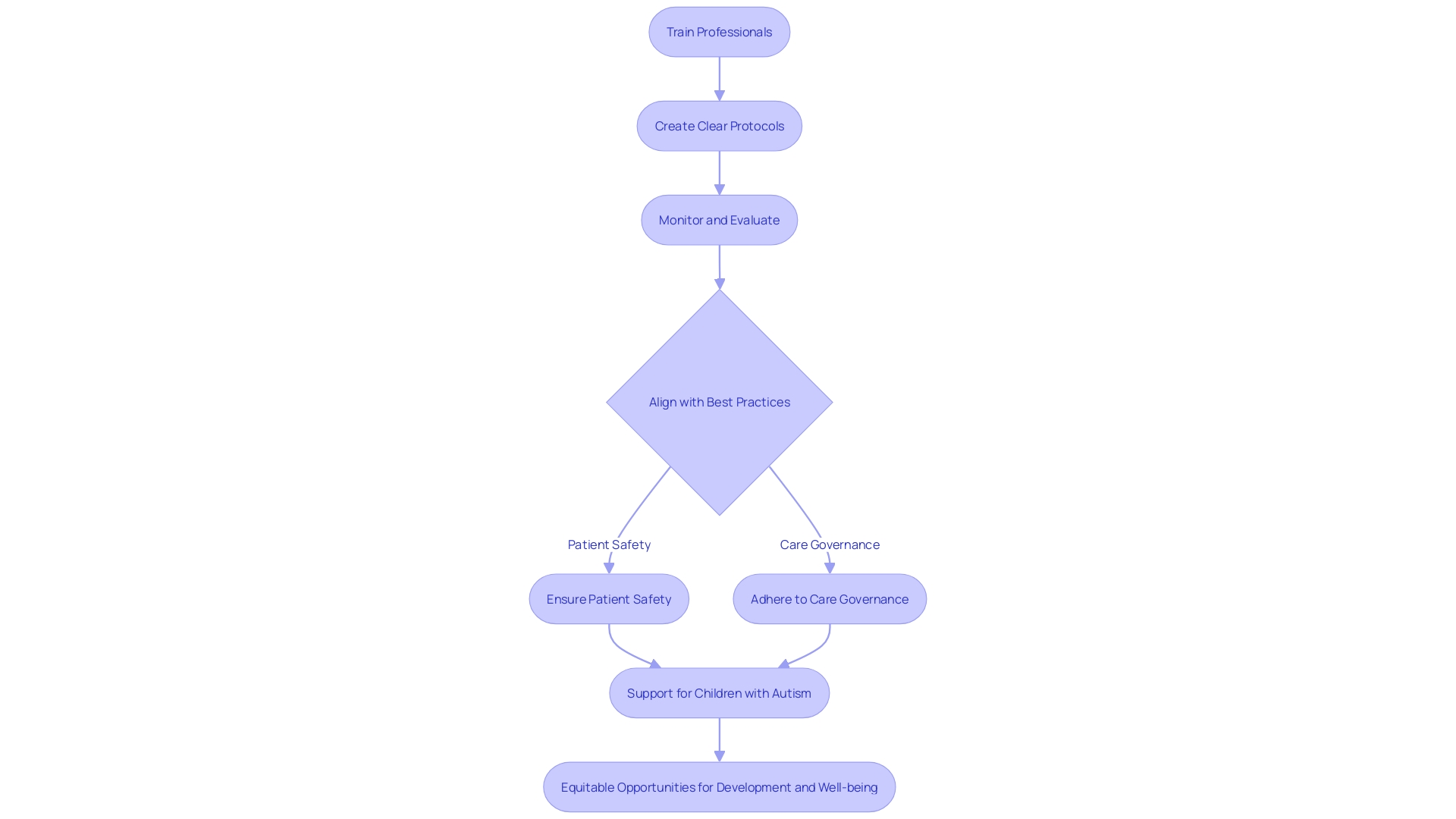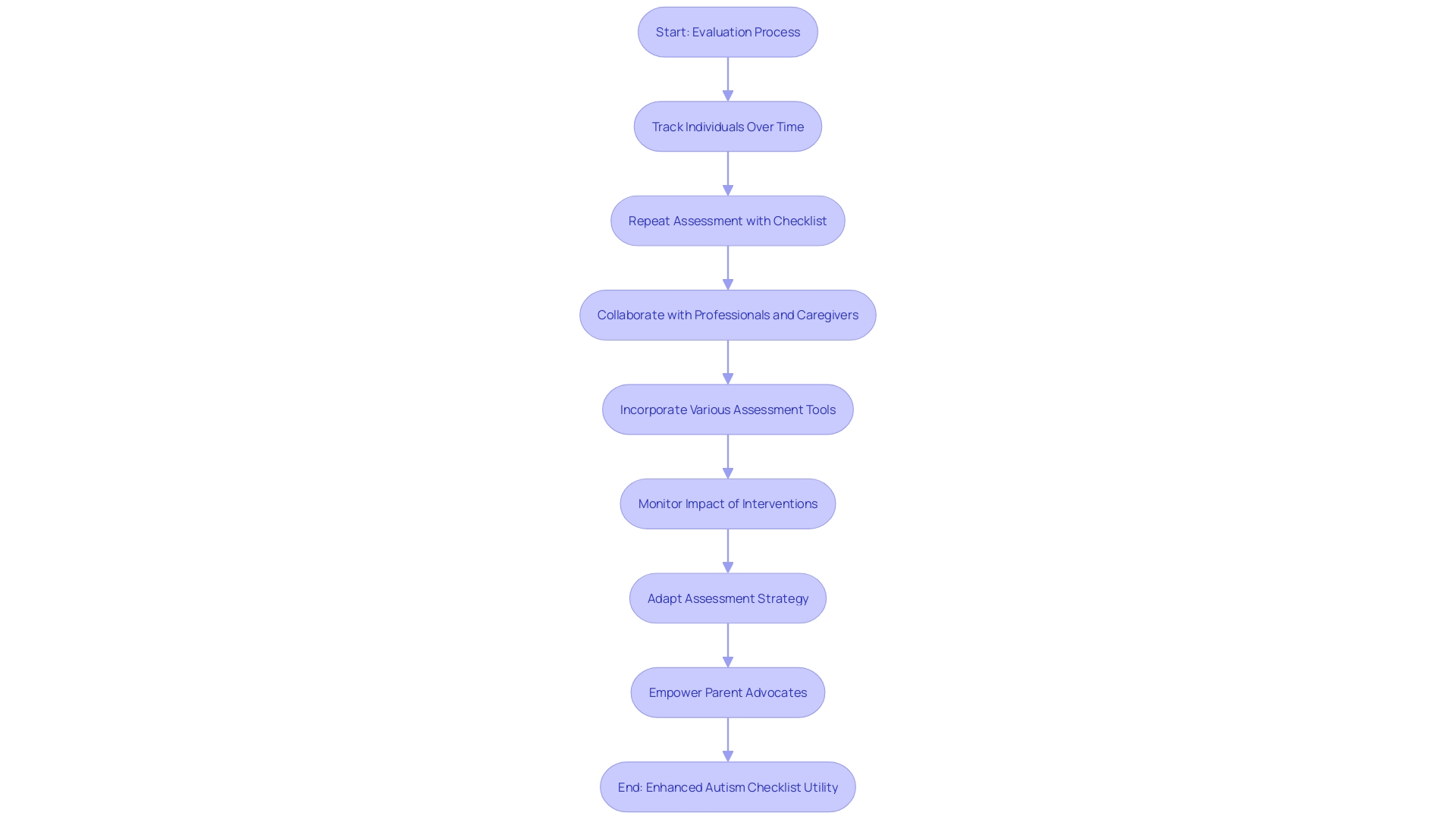Introduction
Using an autism checklist is like having a compass in the complex landscape of autism spectrum disorder (ASD) assessment. It provides a structured approach for observing and recording behaviors, developmental milestones, and social and communicative capacities. By embracing the concept of neurodiversity, we recognize the unique experiences and capabilities of individuals with ASD.
Recent advancements in technology, such as AI-powered diagnostic tools, are revolutionizing the detection of ASD. This article explores the purpose, selection, implementation, and customization of autism checklists, as well as the importance of visual supports and consistency in their use. We will also discuss the evaluation of checklist effectiveness and address common challenges in utilizing them.
By understanding the value of checklists and their role in promoting equity and inclusion, we can ensure the well-being and potential of children with ASD are not left behind.
Understanding the Purpose of an Autism Checklist
Using an autism checklist is akin to having a compass in the intricate landscape of autism spectrum disorder (ASD) assessment. It's an essential aide for both parents and professionals to navigate the complex array of behaviors and skills associated with ASD. With a structured checklist, it becomes feasible to methodically observe and record behaviors, developmental milestones, and social and communicative capacities.
This not only aids in recognizing the individual's unique strengths but also pinpoints areas where additional support might be crucial.
The concept of neurodiversity and digital inclusion is integral to this process. By embracing the diversity of neurological conditions, we acknowledge that each individual with ASD brings a unique set of experiences and capabilities. Emphasizing this personalized approach to ASD assessment, we understand that a one-size-fits-all strategy is ineffective.
A strengths-based approach, as advocated by social worker Bertha Reynolds, suggests focusing on the individual’s talents and abilities, thereby promoting a more positive and empowering framework for intervention.
Recent advancements in technology have given rise to innovative tools for ASD detection. For instance, Duke University researchers have developed Sense to know, an app that utilizes tablet sensors to analyze a child's response to specially designed stimuli. The app's AI component evaluates a range of behavioral responses to predict the likelihood of an ASD diagnosis.
This represents a significant leap forward, as traditional methods often rely solely on direct observation and caregiver feedback.
As Dr. David (Dan) R. Offord, a renowned child psychiatrist, asserted, ensuring a fair race for all children, including those with disabilities, is paramount. By equipping ourselves with the right tools and knowledge, we can ensure that children with ASD are not left behind. This commitment to equity and inclusion is reflected in the projected $24.4bn investment by brands in diversity, equity, and inclusion services by 2030.
This investment acknowledges the broader benefits of diversity, not just to organizations but to society as a whole.
In light of such developments, it is clear that the use of checklists in autism assessment is more than a procedural task—it's a step towards embracing the individuality of each child and ensuring their participation in a society that values their well-being and potential.

Selecting the Right Autism Checklist
Selecting an autism checklist is a critical step in understanding and supporting neurodiversity. To ensure you have a tool that is both effective and practical, there are several key factors you should evaluate:
-
Validity and Reliability: The checklist should have a strong track record of validity and reliability, meaning it consistently measures autism-related behaviors accurately. Look for checklists backed by peer-reviewed research that highlights their efficacy.
-
Appropriate for Developmental Level: The developmental stage of the individual is paramount. Autism manifests differently across various ages, so it's important to choose a checklist tailored to the correct developmental phase, whether for toddlers, children, or adults.
-
Broad Behavioral Coverage: Autism is characterized by a diverse array of behaviors. A quality checklist will encompass a broad spectrum of autism markers, including social communication issues, repetitive behaviors, and sensory sensitivities.
-
User-Friendly: A checklist should be straightforward and simple to administer. Clear instructions and scoring systems are essential for consistent and accurate use by different evaluators.
-
Setting Compatibility: The environment where the assessment will take place—be it at home, school, or a clinical setting—must be taken into account. The checklist should be suitable for use within the intended context.
The importance of such tools is underscored by recent advances in digital inclusion and the push for equity in healthcare. For instance, new technologies like AI-powered diagnostic methods show promise for early autism detection. As Dr. Kristin Sohl notes, reducing healthcare disparities and ensuring timely autism diagnosis is crucial, especially for children of color and those in underserved communities.
Moreover, it's essential to have checklists that support best practices and coordinated care, as highlighted by experts in the field. This not only aids in more accurate diagnoses but also aligns with the broader benefits of diversity, equity, and inclusion initiatives, which are becoming increasingly recognized as valuable to organizations and society.
When carefully chosen, an autism checklist can be a powerful tool, contributing to fair and supportive participation of neurodivergent individuals in various life domains and helping caregivers provide the necessary resources for their children's development and well-being.
Implementing an Autism Checklist
Utilizing an autism checklist can be a transformative step, creating a structured approach for observing and documenting developmental concerns that may indicate autism spectrum disorder (ASD). Starting with a thorough understanding of the checklist itself, one must recognize that each item is a key indicator, and the collective responses can offer profound insights into an individual's unique neurodiversity. Observations should be gathered in diverse environments to capture a comprehensive view of the individual's interactions and behaviors.
This approach echoes the principles of 'digital inclusion,' which advocate for recognizing the individuality of each neurodivergent person. Consistently, figures such as Autistica's estimate that 1 in 70 people is autistic underline the diversity within the neurodivergent population.
When scoring the checklist, it is critical to adhere to established guidelines, ensuring that the results reliably reflect the individual's abilities and challenges. The interpretation of these results isn't just about identifying areas of concern; it's about recognizing strengths and pinpointing opportunities for targeted interventions. This aligns with recent initiatives aimed at improving understanding and support for autistic individuals, particularly in the context of employment where only 3 in 10 working age autistic disabled people are employed.
As Dr. Atul Gawande highlights in the 'Checklist Manifesto,' checklists serve as an essential tool in complex tasks, enforcing compliance with critical requirements—parallels can be drawn to the importance of accessibility in digital environments.
Finally, collaboration with professionals is not merely a step but a partnership in strategizing and implementing effective support systems. This communal effort resonates with the ethos of the Interagency Autism Coordinating Committee (IACC) and organizations like The Autism Community in Action (TACA), which emphasize the significance of united efforts in autism research and services. By sharing the checklist results, stakeholders can draw upon a multitude of experiences, ideas, and good practices to forge comprehensive, individualized support plans that reflect the broader commitment to diversity, equity, and inclusion in society.
Enhancing Checklist Implementation with Visual Supports
Integrating visual supports into an autism checklist can have a transformative impact on individuals with autism, providing a structured and clear framework for daily routines and learning. Visual schedules, for instance, allow for a clearer understanding of sequential activities, aiding in anticipation and preparation for what comes next. Similarly, visual prompts, including pictures and symbols, can serve as effective reinforcements for desired behaviors or navigational aids for various tasks.
The use of visual timers is another powerful tool; they assist in time management, encouraging focus and task completion within set time limits. Visual reminders, such as checklists or cues, are also invaluable, serving as prompts for specific behaviors or adherence to routines. These visual elements not only foster independence but also reduce anxiety by providing predictable and understandable structures.
The efficacy of visual tools aligns with the strengths-based approach, which emphasizes the unique capabilities and talents of individuals with autism. By leveraging their visual processing strengths, we can create learning and living environments that are more conducive to their success. This approach not only removes stigma but also celebrates the diverse contributions individuals with autism can make to their communities.
Dr. Atul Gawande's insights in 'The Checklist Manifesto' highlight the importance of checklists in managing complex tasks, and this is especially true in the context of supporting individuals with autism. Customizing these tools to align with their strengths and preferences is crucial for meaningful engagement and learning.
Moreover, the Web Content Accessibility Guidelines (WCAG) 2.1 provide a framework for creating accessible content for people with various disabilities, including autism. These guidelines, which are widely endorsed and recognized, show the importance of inclusive practices that cater to a broad audience, further underlining the significance of tailored visual supports for individuals with autism.
In essence, visual supports are more than just aids for organization and learning; they are gateways to equitable participation in life's many domains for individuals with autism, ensuring a fairer 'race' in the societal context, as envisioned by child psychiatrist Dr. David (Dan) R. Offord.
Customizing the Checklist for Individual Needs
Autism Spectrum Disorder (ASD) is as diverse as the individuals it touches, necessitating a flexible and personalized approach to assessment. It's essential to adapt autism testing to suit the unique profile of each individual, akin to how a surgeon may use a checklist to ensure all critical steps are followed in complex procedures, as highlighted by Dr. Atul Gawande in the Checklist Manifesto. Tailoring the checklist for autism involves several key strategies:
-
Modify the checklist items: Revise checklist criteria to more accurately reflect the person's specific behaviors, competencies, and developmental stage.
-
Prioritize areas of focus: Determine the most crucial aspects for assessment and rank them accordingly to collect the most pertinent and accurate data.
-
Include additional assessments: Integrate supplementary evaluations or instruments that offer a broader view of the individual's abilities and difficulties.
-
Involve the individual and their family: Engage directly with the autistic person and their family to incorporate their unique insights and viewpoints, which can enhance the customization of the checklist.
Utilizing a strengths-based approach, as conceptualized by social worker Bertha Reynolds, shifts the focus from limitations to the diverse talents and capabilities of individuals on the spectrum. This approach fosters a more equitable and supportive environment, as emphasized by child psychiatrist Dr. David (Dan) R. Offord, advocating for a fair race for all children, including those with disabilities.
The importance of such individualized care is further underscored by the fact that 1 in 45 adults in the U.S. are diagnosed with ASD. The early identification and understanding of autism through tailored assessments are crucial in providing the necessary support for individuals to thrive in their communities.
Innovative initiatives, like those by Emirates and Dubai International Airport, demonstrate the value of collaborating with families and local organizations to create personalized experiences that cater to neurodivergent passengers, enhancing their travel experience. Similarly, the Assessing Fitness to Drive (AFTD) guidelines, while maintaining national standards, are interpreted with flexibility across different regions to accommodate the diverse needs of individuals with autism.
This personalized approach in autism testing and support not only improves the accuracy of diagnoses but also aligns with the philosophy that autism is not a defect but a different way of thinking, as supported by numerous experts and advocates for neurodiversity.

Ensuring Consistency and Fidelity in Checklist Implementation
To ensure the effectiveness of autism checklists, it's essential to establish a system of consistency and fidelity. Training professionals in the checklist's purpose, scoring, and procedures is vital for uniform understanding. Creating clear, structured protocols for administration promotes consistent use across various environments and individuals.
Ongoing monitoring and evaluation of the process help to catch and correct discrepancies, maintaining the integrity of the data collected. This approach not only enhances the reliability and validity of the assessments but also aligns with best practices in patient safety and care governance, as evidenced by the World Health Organisation's findings on medical errors. Moreover, engaging in such standardized practices supports the broader goals of diversity, equity, and inclusion in healthcare and research, recognizing the unique needs and strengths of neurodivergent individuals.
By adhering to these standards, we contribute to fair and effective support for all children, including those with autism, fostering equitable opportunities for their development and well-being.

Evaluating the Effectiveness of an Autism Checklist
To enhance the utility of an autism checklist, it is critical to engage in a multifaceted evaluation approach. Tracking the development of individuals with autism is imperative, and this can be done by observing changes in behaviors and characteristics over time through repeated assessment with the checklist. Furthermore, collaboration with professionals and caregivers who interact closely with the individual offers additional perspectives on how effectively the checklist pinpoints areas requiring support and informs intervention strategies.
Beyond the checklist, incorporating a variety of assessment tools can provide a richer, more nuanced understanding of the individual’s abilities and challenges. Crucially, the impact of interventions informed by the checklist should be monitored to gauge their effectiveness in meeting the individual's needs. By evaluating these aspects, the use of an autism checklist becomes not just a static tool, but a dynamic part of a comprehensive assessment strategy that adapts and evolves to better serve each individual.
Dr. Atul Gawande highlighted the importance of checklists in ensuring critical steps are not overlooked, especially as tasks grow in complexity. This insight is equally applicable to the realm of autism assessment, where checklists must be thoughtfully constructed and applied to truly be beneficial.
Recent advances in technology, such as those developed by Duke University's SenseToKnow program, are revolutionizing the way autism is diagnosed. By leveraging eye-tracking technology and AI, new tools are emerging that could democratize access to early screening, particularly for underserved populations.
These technological strides complement the ethos articulated by Dr. David (Dan) R. Offord, emphasizing the need for equitable participation in all aspects of life for children with disabilities, including those with autism. By integrating these innovative diagnostic tools, the aim is to create a fairer 'race' for all children, ensuring early identification and support that align with their unique needs and strengths, thus fostering their mental health and overall well-being.

Addressing Common Challenges in Using an Autism Checklist
Navigating the intricate process of autism testing is critical for accurate diagnosis and effective intervention. When utilizing a checklist to identify autism spectrum disorder (ASD), it's crucial to complement it with a holistic approach. Consider that a checklist alone may not capture the full spectrum of an individual's behaviors and characteristics.
To counter this, it's advisable to supplement checklists with additional assessments that offer a more comprehensive understanding.
Cultural factors play a significant role in the manifestation of behaviors often associated with autism. Tailoring the checklist and assessment process to account for cultural nuances makes the evaluation more inclusive and sensitive to diverse backgrounds. Communication barriers are also a key consideration, as individuals with ASD may face challenges that affect their ability to participate in checklist assessments.
Incorporating visual aids and assistive technology can bridge communication gaps and ensure that their needs are accurately represented.
Effective collaboration among professionals, caregivers, and educators is paramount in the assessment process. The Interagency Autism Coordinating Committee (IACC) underscores the importance of joint efforts to advance autism research and services, reflecting the collective expertise of various stakeholders in the field.
Dr. David (Dan) R. Offord's poignant words, "I do not mind if my children are in a race as long as the race is fair," resonate deeply when considering the equitable assessment of autistic individuals. It's essential to recognize both their unique challenges and the strengths they bring to their communities. Providing a fair and supportive environment is key to fostering mental health and social participation for children and youth with disabilities.
The prevalence of ASD, affecting 1 in 45 adults in the U.S., highlights the necessity for accurate diagnostic tools and processes. It's essential that adults who suspect they may be on the spectrum have access to proper evaluation, particularly given the barriers they may face in obtaining a diagnosis. The gold standard for autism diagnosis remains comprehensive, involving a review of developmental history and behavior as well as self-reported questionnaires.
To offer the most effective support, it's crucial to understand the specific needs of autistic individuals. Dr. Katie Maras, from the Center for Applied Autism Research, emphasizes the need for a nuanced approach in interviews with autistic adults, who may experience unique language and social communication issues. Dr. Atul Gawande's insights from the Checklist Manifesto further support the idea that checklists, while valuable, must be part of a larger framework to ensure critical steps are consistently followed.
Finally, realist evaluation informs us that the success of interventions, including autism assessments, can vary significantly based on context. A comprehensive understanding of the social, economic, political, and cultural structures is necessary to determine if the intended outcomes are achieved. This approach offers valuable insights alongside outcome data, contributing to the continuous evolution of autism testing practices.

Conclusion
Using an autism checklist provides a structured approach for observing and recording behaviors, milestones, and capacities in individuals with Autism Spectrum Disorder (ASD). Recent advancements in technology, such as AI-powered diagnostic tools, are revolutionizing the detection of ASD. Selecting the right checklist involves considering factors like validity, appropriateness, and user-friendliness.
Implementing the checklist requires consistency and collaboration. Enhancing implementation with visual supports and customizing the checklist for individual needs promotes equitable participation. Ensuring consistency and fidelity in implementation enhances the reliability and validity of the assessments.
Evaluating effectiveness involves tracking development, collaborating with professionals and caregivers, and incorporating additional assessment tools. Addressing challenges involves a holistic approach, supplementing the checklist, considering cultural factors, and effective collaboration. In conclusion, utilizing an autism checklist is a valuable tool in navigating ASD assessment.
By selecting the right checklist, implementing it effectively, enhancing it with visual supports, customizing it, ensuring consistency, and evaluating effectiveness, we can support the well-being and potential of individuals with autism.
Start using an autism checklist today and enhance your ASD assessment process!




